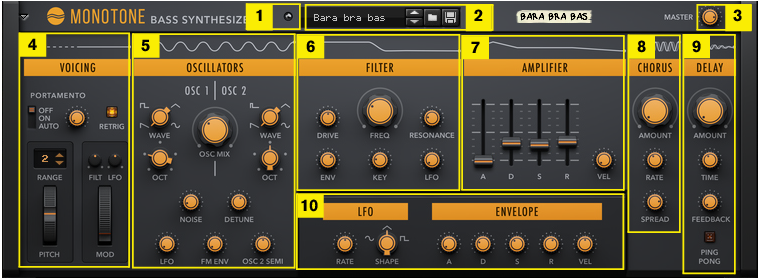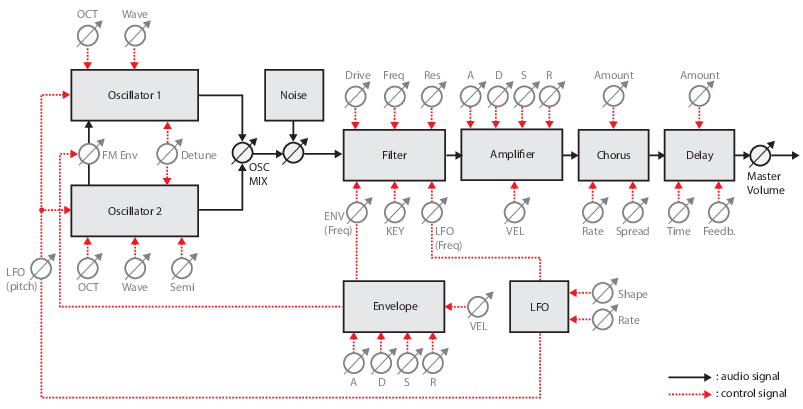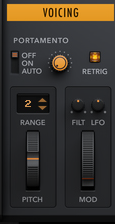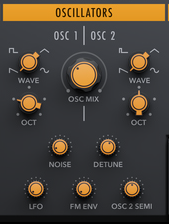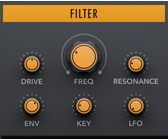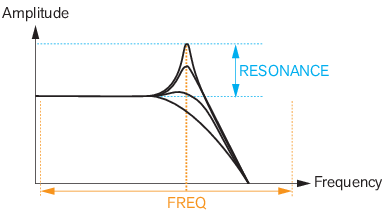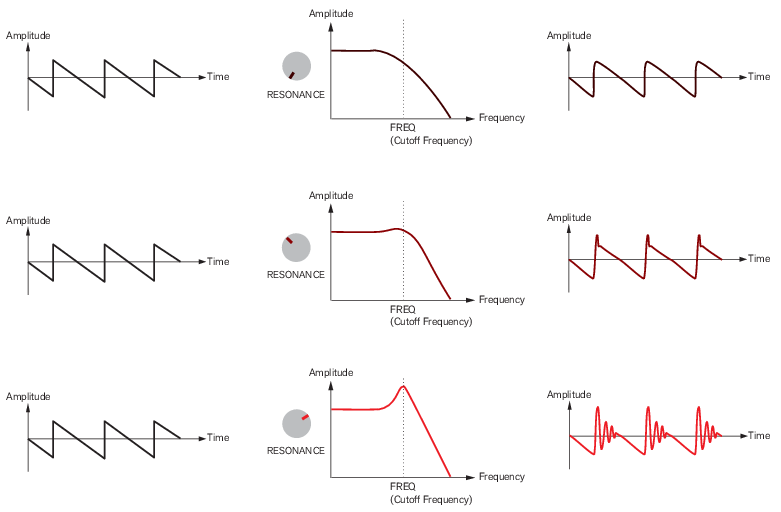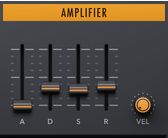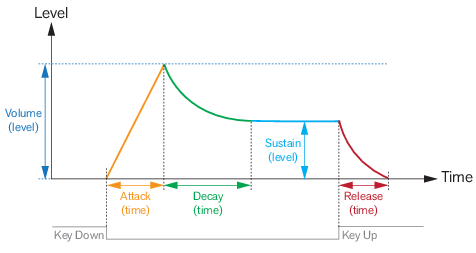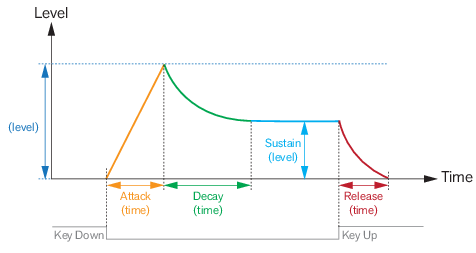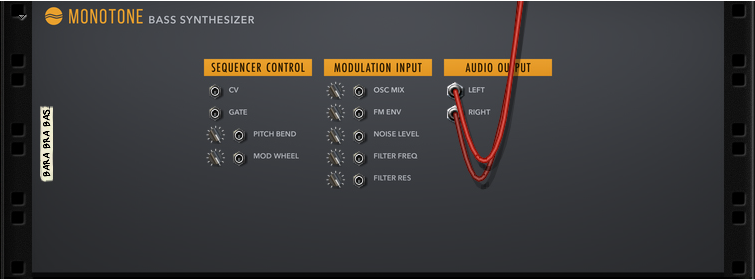Loading and saving patches is done in the same way as with any other internal Reason device, see “Loading patches” and “Saving patches” for details.
|
|
Set the desired Pitch Bend range for the “Pitch” wheel with the up/down buttons, or by click-holding on the display and dragging up/down.
|
The Pitch bend wheel can be used for bending note pitches up and down. Monotone also responds to Pitch Bend MIDI data from a connected MIDI master keyboard. You set the desired Pitch bend Range with the “Range” control above the Pitch bend wheel.
#Mod
Note that for the LFO modulation to work you need to already have some LFO modulation set in the Oscillator (see “LFO”) and/or Filter (see “LFO”) sections.
|
•
|
|
•
|
|
•
|
#Oct
#LFO
|
|
|
|
#Freq
This controls the resonance peak level at the currently set cutoff frequency (see “Freq” above).
The picture below shows a ramp oscillator signal lowpass-filtered at three different Resonance levels:
The picture below shows a ramp oscillator signal lowpass-filtered at three different Resonance levels:
#Env
|
|
#Key
#LFO
|
|
#Vel
#Rate
#Time
An LFO (Low Frequency Oscillator) is used for generating cyclic modulation. A typical example is to have an LFO modulate the pitch of a signal to produce vibrato, but there are also other applications for LFOs. The LFO section features an LFO which can be set to control Oscillator pitch (see “LFO”) and/or Filter frequency (see “LFO”).
#Rate
The Envelope section features a standard ADSR envelope, which can be used for controlling Oscillator Frequency Modulation (see “FM Env”) and/or Filter Frequency (see “Env”).
#Vel
These are the main audio outputs. When you create a new Monotone device, these outputs are auto-routed to the first available Mix Channel in the main mixer. If there is no Mix Channel available, a new one will be automatically created.

